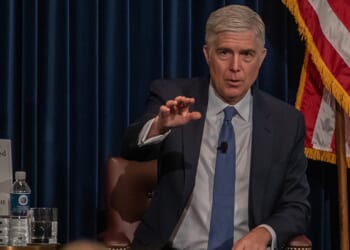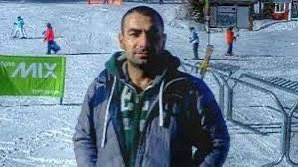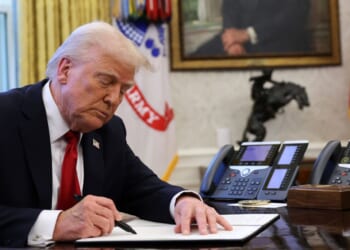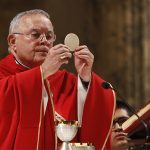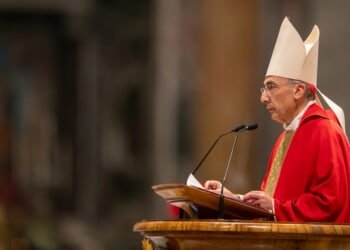America, so the received wisdom goes, is home to five great orchestras: the New York Philharmonic, the symphony orchestras of Boston and Chicago, and the orchestras of Philadelphia and Cleveland. To this “Big Five,” one should rightly add the National Symphony Orchestra, which performs mainly at Washington’s recently newsworthy John F. Kennedy Center for the Performing Arts. In March, the NSO embarked on a five-stop tour of the Sunshine State, where the performing arts are enjoying a renaissance as Florida becomes a new nexus of national power and influence.
Founded in 1931, the NSO is younger than its celebrated peer orchestras, most of which entered the world in Gilded Age exuberance. Its excellence has long been in gestation, but, helmed since 2017 by its music director Gianandrea Noseda, it is reaching new heights.
The orchestra’s visit to West Palm Beach amply exhibited its wide-ranging capabilities. The concert, at the Kravis Center, opened with the award-winning contemporary composer Carlos Simon’s Four Black American Dances, a lively pastiche deriving from a variety of forms notable in the African American experience. Simon, whose father was a pastor, was only allowed to listen to gospel until he was ten years old, and he draws from that tradition as well as jazz, classical pops, film scores, and the neo-Romanticism favored by composers such as William Grant Still. The first movement, “Ring Shout,” emerges in a fast staccato, paying homage to a rhythmic traditional dance form of the same name that African slaves preserved in New World captivity. “Waltz” gives a gorgeous rendition of the European dance, which was appropriated, for lack of a better term, in black debutante balls and other 1930s dance parties that resulted from racial segregation but still aspired to the highest standards. Simon scores his waltz much like the Hollywood tunes of the era, which gave aspiration to millions. Next, as a kind of scherzo in this four-part work, “Tap!” conveys a lively rendition of jazz dance. The “Holy Dance” finale visits the gospel cadences of black churches, with the trombone prominently used, as it is throughout Western sacred music.
Simon is a professor of music at Georgetown University and the composer-in-residence at the Kennedy Center, with an appointment through 2027. Both institutions have entered the political fray lately. Georgetown has faced a legacy of slave ownership by its early Jesuit administrators, for which it has offered seemingly endless apologies, indulged in immense compensatory measures, and signaled its virtue to the point of alienating some alumni, myself included. The Kennedy Center, whose chairman is now President Trump, plans, among other measures, to eradicate DEI content and focus on artistic and cultural excellence. Where does that leave Simon, who has an interest in social activism and recently said of his Kennedy Center post that he “will continue to use this platform without compromise”? Regardless of his politics, his music is excellent and on that basis should be welcomed.
More excellence came from the superb violinist Hilary Hahn, who performed the solo part in Johannes Brahms’s Violin Concerto in D Major in place of the previously announced Korngold Violin Concerto. Hahn had withdrawn from performance for more than half a year due to a double pinched nerve. In this performance, however, she came back with soaring assurance and confident musicianship. She took few risks, but her consistently admirable virtuosity lent a steady hand to the composer’s bucolic passions, especially as they emerged in the first movement cadenza. Noseda, who could well be called a “soloist’s conductor,” led a perfectly balanced performance from the orchestra that flawlessly incorporated the solo playing. Hahn’s encore, Simon’s “Shards of Light,” allowed her more time to capture her instrument’s delectable sweetness.
Noseda’s turn to shine came in the second part, a majestic performance of Beethoven’s Symphony No. 5 in C Minor. One of the most familiar symphonies in the repertoire, Noseda avoided cumbersome layering in favor of a light but visceral and exciting touch. Noseda, who has recorded all nine of Beethoven’s symphonies with the NSO, stands in the ranks of our finest Romantic conductors. With this degree of devotion to the classics and the versatility to reach into new spheres, his orchestra could be a firm foundation for the Kennedy Center as it enters its next chapter.


